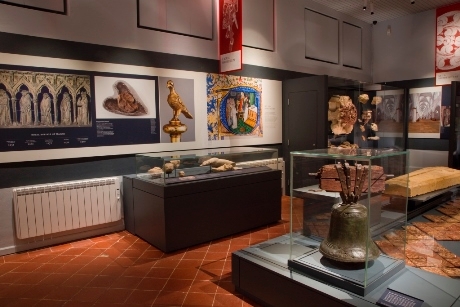
At Hailes Abbey in Gloucestershire, English Heritage has opened a new museum that reveals the hidden stories behind what was once one of the country’s most important pilgrimage destinations.
For nearly three centuries, pilgrims flocked to the Cistercian abbey to visit a shrine said to contain the blood shed by Christ on the cross, before it was suppressed on the orders of King Henry VIII on Christmas Eve 1539.
The new museum focuses on the history of Hailes Abbey, the lives of the monks who worshipped and lived there, and of the pilgrims who travelled long distances to visit the holy relic (before it was denounced as a fake and its shrine destroyed).
What can visitors see?
Highlight sights include a 13th century stone sculpture of Old Testament figure, Sampson, fighting a lion, symbolising Christ’s defeat of death, and a fragment of 14th century monk’s spectacles, lost for centuries on the site of the monks’ choir-stalls.
There is also a metal seal of the abbey’s Confraternity or brotherhood on display, as well as floor tiles, fragments of the funerary monuments of Earl Richard of Cornwall and other members of the English royal family buried here, and decorative stonework evoking the splendour of the abbey’s buildings.
Information for groups
The new museum is open daily until 31st October before closing for the winter. Groups of 11 or more people receive a 15% discount at English Heritage properties and events. One tour leader and one coach driver are admitted free with each group and do not count towards group numbers.
For the first time since 1960, groups can combine a visit with a ride on the Gloucestershire Warwickshire Steam Railway and alight at the re-opened abbey station, Hayles Abbey Halt.
For more information or to pre-book group visits and guided tours at Hailes Abbey visit www.english-heritage.org.uk/hailes.












